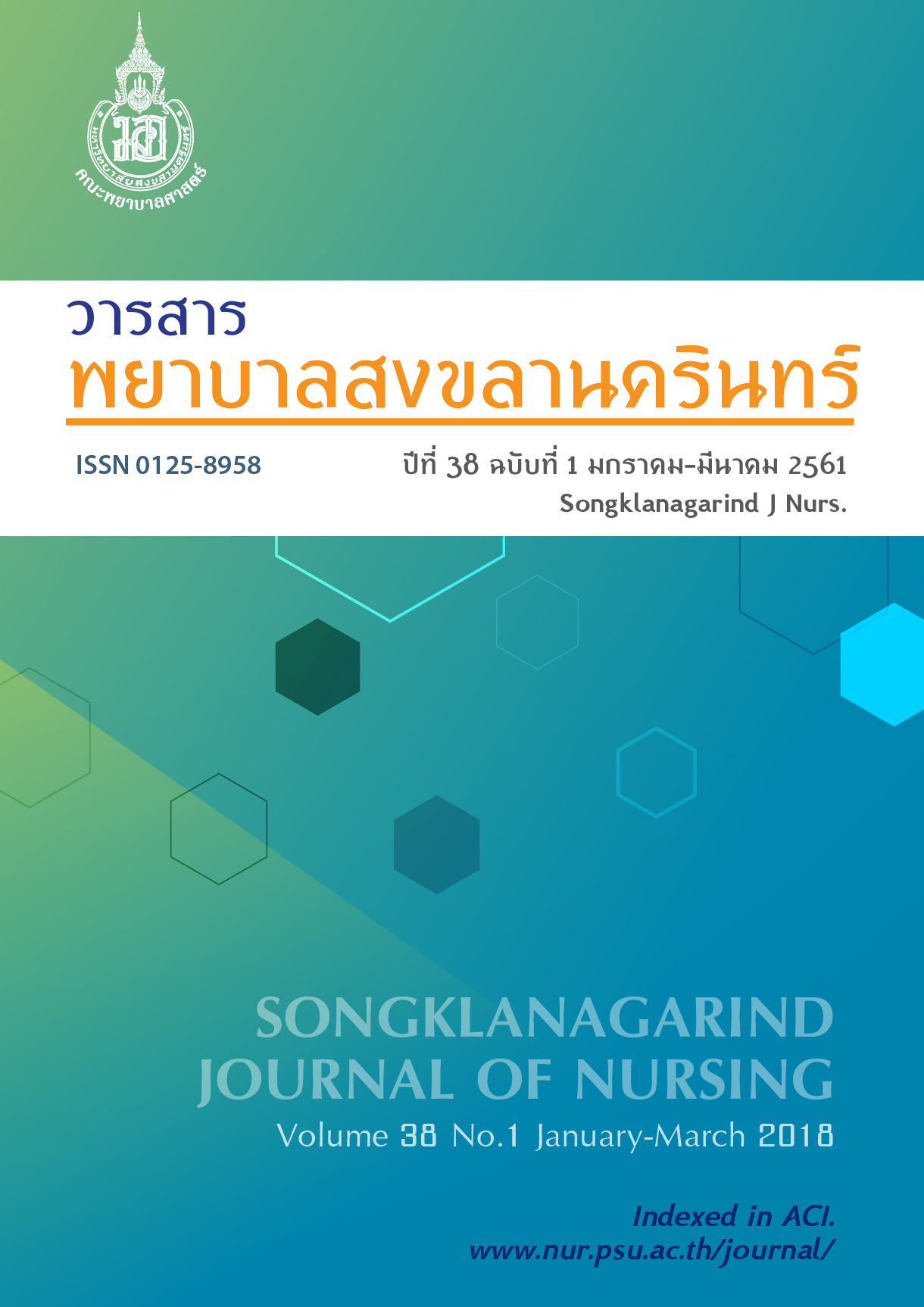Thai Traditional Midwifery Care
Main Article Content
Abstract
Thai traditional midwifery care involves knowledge of holistic health care and wisdom of Thai ancestors. This traditional knowledge and wisdom have been preserved from generation to generation, aimed at caring for pregnant women and their babies from the antenatal to postpartum periods in normal process. The caring principles of the antenatal period are dietary care behavior care and Thai massage. The objectives of this care are to prevent complications during labor and encourage a comfortable pregnancy. In terms of the intrapartum period, the purpose of Thai traditional midwifery is to encourage pregnant women to give birth at home and belief practice for new life. Furthermore, Thai massage is used to decrease some pain and fatigue from the antepartum to postpartum care periods. After delivery, a series of Thai wisdom knowledge is applied to mothers, for example, heat therapy and massage in order to keep their newborn and themselves healthy. Heat therapy is employed since it is believed that heat would provide short-term and long-term benefits for women’s health. Some of the benefits include eliminating lochia from the uterus and vaginal canal, reducing pain during sexual intercourse, and reducing roughness of facial skin, slackening abdominal surface cause by delivery and lack of moisture in the vaginal area, as well as low immunity.
Article Details
References
2. Subcharoen P. Thai traditional medicine: Holistic medicine.2nd ed. Bangkok: E.T.O printing; 2001. Thai.
3. Kansukcharearn A. Thai traditional midwives (moh tum yae) in caring for mothers and infants, in Petchaburi province, Thailand: Case studies. IJSSH. 2014; 4(6):435-38. doi: 10.7763/ IJSSH.2014.V4.394.
4. Deewised K. Handbook of thai massages training. War veterans administration: Bangkok; 1999. Thai.
5. Leung-aroon A. Unit 3 health promotion anddisease prevention according to Thai traditional therapy. In: Sukhothai Thammathirat, editor.Teaching documents on Thai traditional therapy units 1-8. Thailand. Sukhothai Thammathirat open university; 2005. Thai.
6. Sittitanyakit K. Manual on the use of Thai traditional medicine for the health care of people. Bangkok: War Veterans; 2004. Thai.
7. Jirojwong S, editor. Health beliefs and the useof antenatal care among pregnant women in southern Thailand. Amsterdam: Harwood academicpublisher; 1996.
8. Pornbunditpattama S. Folk wisdom of muslim midwives (Toh-bidae) practing in the five Southern-Border provinces of Thailand. Journal of Thai Traditional and alternative medicine.2007; 5(3) :237-41.
9. Liamputtong P, Yimyam S, Parisunyakul S, et al. Traditional belief about pregnancy and child birth among women from Chiang Mai, Northern Thailand. Midwifery. 2005; 21(2):139- 153. doi: 10.1016/j.midw.2004.05.002.
10. Anfield G, editor. A gentler way into the world,In Reader’s digest family guide to alternative medicine. London: The reader’s Digest AssociationLimited; 1994.
11. Chairattanapong N, editor. Handbook of Thai wisdom use of midwifery obstetrics . Thailand: Faculty of Nursing Prince of Songkla University; 2004. Thai.
12. Inkaew S. Effect of thai traditional massage on labour pain.[dissertation].[Songkhla] Prince of Songkla University; 2012.
13. Limtiyayotin A. Unit 9 Massage in maternal and children. In: Sukhothai Thammathirat, editor.Teaching documents on practice in Thai traditional massage units 6-10. Thailand. SukhothaiThammathirat open university; 2014. Thai.
14. Kaewsarn S, Moyle W, Creedy D. Traditional postpartum practices among Thai women. JAN. 2013; 41(4): 358-66.
15. Jamjan L, Khantarakwong S, Hongthong S, et al.Thai traditional medicine for postnatal mother in the community of central region. JRTAN. 2014;15(2):195-202. doi: 10.1046/j.1365-2648. 2003.02534.x.
16. Denni CL, Fung K, Grigoriadis S, et al. Traditional postpartum practices and rituals: A qualitative systematic Review. J.Women’s Health. 2007; 3(4): 487-502. doi: 10.2217/17455057. 3.4.487.
17. Panasantikul D. Revision and renovation of Thai midwifery textbook. at: National and international conference interdisciplinary research for local development sustainability on 15th. Proceedings of national and international conference interdisciplinary research for local development sustainability on 15th; 2015 March 31; Chiang Mai.
18. Arpharatsami N. The enhancement of the mother and children’s health care: the perspectives fromthe Thai medication and the modern medication. TMJ.2013;13(1):79-88. Thai.


